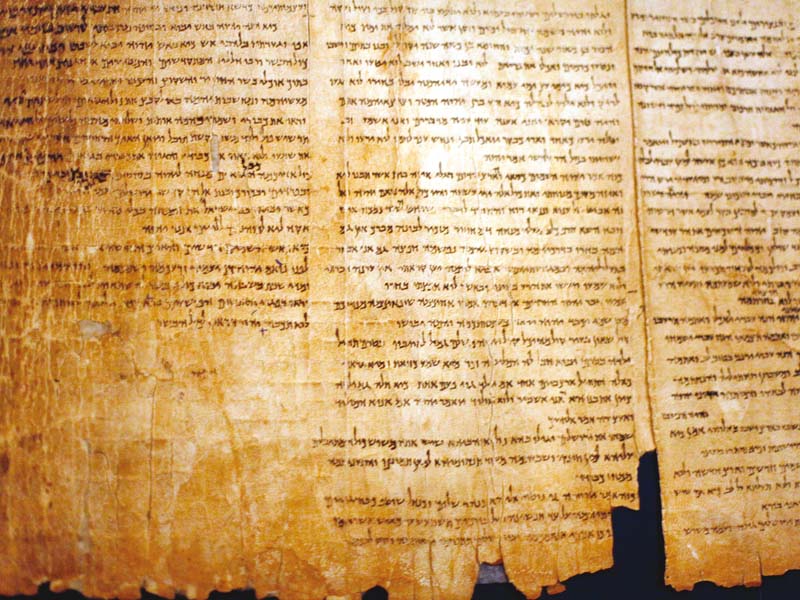
Believed to have been carved between 300AD and 500AD for an ancient synagogue, the tablet is the earliest known stone inscription of the 10 Commandments. According to the Old Testament, God revealed the Commandments on two stone slabs to Moses on Mount Sinai. As a central part of the shared Jewish and Christian heritage, the set of divine precepts — including instructions to worship only God, honour one’s parents and prohibitions on sins like murder, adultery, theft and blasphemy — are fundamental to both faiths.
Some Dead Sea Scrolls written in the first century AD on parchment or papyrus contain versions of the 10 Commandments, but the earliest known stone inscriptions date to several centuries later. They are the so-called “Samaritan Decalogues,” created by the Jewish sect that lived in Samaria, a mountainous region north of Jerusalem.
Only four examples of the Samaritan Decalogues are known to exist. Three of them, all fragmentary, currently reside in museum collections or at protected sites in the Middle East. The fourth will go up for auction on November 16 in Beverly Hills, California. Presented by Heritage Auctions, the tablet is the centerpiece of the Living Torah Museum Auction, a collection of some 50 Bible-related historical artifacts. “The Living Torah example is among the earliest of these Decalogues and the most complete,” David Michaels, Director of Antiquities for Heritage Auctions, said. “It is also the only example that can be legally obtained for private ownership.”
The tablet is believed to have decorated the entrance to the synagogue located near Yavneh. The Romans, who heavily repressed the Samaritans, may have destroyed the synagogue between 400AD and 600AD or it may have fallen victim to Muslims or Crusaders up to the 12th century.
After the workers found the tablet, it was used as flooring in a privately owned courtyard, where foot traffic rubbed out portions of the writing. A man named Y Kaplan, who acquired the slab in 1943 submitted it to scholars for study.
In the 1990s, antiquities dealer Robert Deutsch bought the slab, which was designated a “National Treasure” of Israel. Despite that distinction, in 2005 the Israel Antiquities Authority (IAA) approved its export to the United States, where it was entrusted to the care of Rabbi Saul Deutsch of the Living Torah Museum.
At the upcoming auction, the tablet will be included among a number of other historically valuable objects from biblical times. Because of its “National Treasure” status, the buyer of the tablet must agree to display it in public, as a condition of ownership. “We seek either an institutional buyer or a private one who will agree to exhibit the 10 Commandments Stone so that all can see, enjoy and learn from it,” said Michaels. Proceeds from the auction will go to upgrading the Living Torah Museum’s facilities in New York.
Published in The Express Tribune, October 29th, 2016.
Like Life & Style on Facebook, follow @ETLifeandStyle on Twitter for the latest in fashion, gossip and entertainment.


1727177459-0/BeFunky-collage-(6)1727177459-0-165x106.webp)



1732687571-0/Untitled-design-(2)1732687571-0-270x192.webp)










COMMENTS
Comments are moderated and generally will be posted if they are on-topic and not abusive.
For more information, please see our Comments FAQ